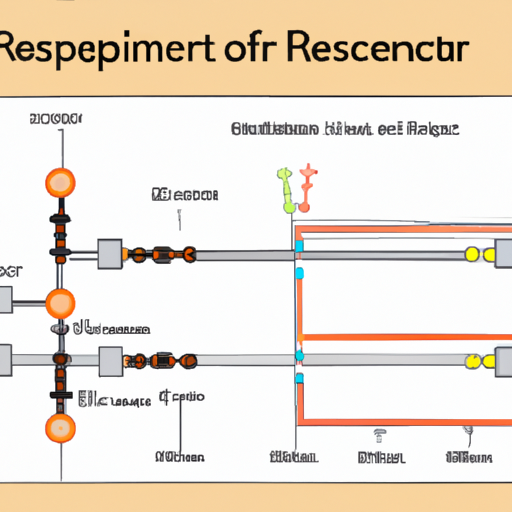What is the Main Application Direction of Resistor Diagrams?
I. Introduction
In the world of electronics, understanding the flow of electricity and how components interact is crucial. One of the fundamental tools for visualizing and analyzing these interactions is the resistor diagram. A resistor diagram is a graphical representation that illustrates how resistors are arranged within a circuit and how they function. These diagrams are essential for both novice and experienced engineers, as they provide a clear and concise way to understand complex electrical systems. This blog post will explore the main application directions of resistor diagrams, highlighting their significance in circuit design, education, troubleshooting, and various industries.
II. Understanding Resistor Diagrams
A. Components of Resistor Diagrams
1. Symbols and Notations
Resistor diagrams utilize standardized symbols and notations to represent different components. The most common symbol for a resistor is a zigzag line, although variations exist depending on the context and the specific type of diagram. Understanding these symbols is crucial for interpreting diagrams accurately.
2. Types of Resistors
There are various types of resistors, including fixed, variable, and specialty resistors. Each type serves a unique purpose in a circuit. Fixed resistors have a constant resistance value, while variable resistors, such as potentiometers, allow for adjustable resistance. Specialty resistors, like thermistors and photoresistors, change resistance based on environmental conditions.
B. Basic Principles of Resistor Functionality
1. Ohm's Law
At the heart of resistor functionality is Ohm's Law, which states that the current (I) flowing through a conductor between two points is directly proportional to the voltage (V) across the two points and inversely proportional to the resistance (R). This relationship is expressed mathematically as V = I × R. Understanding this law is fundamental for analyzing circuits and predicting how they will behave under different conditions.
2. Series and Parallel Configurations
Resistors can be arranged in series or parallel configurations, each affecting the overall resistance and current flow differently. In a series configuration, the total resistance is the sum of individual resistances, while in a parallel configuration, the total resistance decreases as more resistors are added. These configurations are crucial for designing circuits that meet specific electrical requirements.
III. Main Application Directions of Resistor Diagrams
A. Circuit Design and Analysis
1. Role in Circuit Schematic Creation
One of the primary applications of resistor diagrams is in circuit design and analysis. Engineers use these diagrams to create circuit schematics, which serve as blueprints for building electronic devices. By visualizing the arrangement of resistors and other components, designers can ensure that the circuit will function as intended.
2. Analyzing Circuit Behavior
Resistor diagrams also play a vital role in analyzing circuit behavior. By applying Ohm's Law and understanding the configurations of resistors, engineers can predict how changes in voltage or resistance will affect current flow. This analysis is essential for optimizing circuit performance and ensuring reliability.
B. Educational Purposes
1. Teaching Basic Electronics
Resistor diagrams are invaluable tools for teaching basic electronics concepts. They provide a visual representation of how circuits work, making it easier for students to grasp complex ideas. In educational settings, instructors often use these diagrams to illustrate principles such as voltage, current, and resistance.
2. Visual Learning Tools
For visual learners, resistor diagrams serve as effective learning aids. They help students visualize the relationships between different components and understand how they interact within a circuit. This visual approach can enhance comprehension and retention of fundamental electronics concepts.
C. Troubleshooting and Repair
1. Identifying Faulty Components
In the realm of troubleshooting and repair, resistor diagrams are essential for identifying faulty components within a circuit. By referencing the diagram, technicians can trace the flow of electricity and pinpoint where issues may arise. This capability is crucial for efficient repairs and minimizing downtime.
2. Understanding Circuit Failures
When a circuit fails, understanding the resistor diagram can provide insights into the underlying causes. Technicians can analyze the diagram to determine whether a resistor has failed or if there are issues with other components. This understanding is vital for effective troubleshooting and ensuring that repairs are conducted accurately.
D. Simulation and Modeling
1. Software Tools for Circuit Simulation
With advancements in technology, software tools for circuit simulation have become increasingly popular. These tools allow engineers to create virtual resistor diagrams and simulate circuit behavior without physically building the circuit. This capability enables rapid prototyping and testing of designs, saving time and resources.
2. Predicting Circuit Performance
Simulation software can predict how a circuit will perform under various conditions, providing valuable insights for engineers. By analyzing the results of simulations, designers can make informed decisions about component selection and circuit configurations, ultimately leading to more efficient and reliable designs.
IV. Industry Applications
A. Consumer Electronics
1. Application in Everyday Devices
Resistor diagrams are ubiquitous in the design of consumer electronics. From smartphones to home appliances, resistors play a critical role in regulating current and ensuring devices operate safely and efficiently. Understanding resistor diagrams is essential for engineers working in this fast-paced industry.
2. Importance in Product Development
In product development, resistor diagrams help engineers optimize designs for performance and cost-effectiveness. By analyzing circuit behavior and making informed decisions about resistor values and configurations, engineers can create products that meet consumer demands while adhering to budget constraints.
B. Automotive Industry
1. Role in Vehicle Electronics
The automotive industry relies heavily on resistor diagrams for designing vehicle electronics. Modern vehicles are equipped with numerous electronic systems, from engine control units to infotainment systems. Resistor diagrams help engineers ensure that these systems function correctly and safely.
2. Safety and Performance Considerations
In the automotive sector, safety is paramount. Resistor diagrams are used to analyze and optimize circuits that control critical functions, such as braking and steering. By ensuring that these circuits operate reliably, engineers contribute to the overall safety and performance of vehicles.
C. Telecommunications
1. Signal Processing and Resistor Use
In telecommunications, resistors play a vital role in signal processing. Resistor diagrams are used to design circuits that amplify, filter, and modulate signals for transmission. Understanding how resistors interact within these circuits is essential for optimizing signal quality and reliability.
2. Network Design and Optimization
Resistor diagrams are also crucial for network design and optimization. Engineers use these diagrams to analyze the performance of communication networks, ensuring that signals are transmitted efficiently and without distortion. This analysis is vital for maintaining high-quality communication services.
V. Future Trends in Resistor Diagrams
A. Advancements in Circuit Design Software
As technology continues to evolve, advancements in circuit design software are expected to enhance the capabilities of resistor diagrams. New tools will likely offer more intuitive interfaces, improved simulation capabilities, and integration with other design software, making it easier for engineers to create and analyze circuits.
B. Integration with Emerging Technologies
1. IoT and Smart Devices
The rise of the Internet of Things (IoT) and smart devices presents new opportunities for resistor diagrams. As more devices become interconnected, engineers will need to design circuits that accommodate increased complexity. Resistor diagrams will play a crucial role in visualizing and optimizing these designs.
2. Renewable Energy Systems
With the growing emphasis on renewable energy, resistor diagrams will be essential for designing and optimizing circuits in solar panels, wind turbines, and energy storage systems. Engineers will need to understand how resistors interact within these systems to maximize efficiency and performance.
C. Educational Innovations
1. Online Learning Platforms
The shift towards online learning has opened new avenues for teaching electronics concepts. Online platforms can leverage resistor diagrams to create interactive learning experiences, allowing students to engage with circuit design and analysis in innovative ways.
2. Interactive Tools for Learning
Interactive tools, such as virtual circuit simulators, can enhance the learning experience by allowing students to experiment with resistor diagrams in real-time. These tools can help reinforce concepts and provide hands-on experience without the need for physical components.
VI. Conclusion
In summary, resistor diagrams are a fundamental aspect of electronics, serving various applications across circuit design, education, troubleshooting, and industry. Their importance cannot be overstated, as they provide a clear and concise way to visualize and analyze complex electrical systems. As technology continues to advance, the relevance of resistor diagrams will only grow, paving the way for innovations in circuit design and education. For those interested in exploring the world of electronics further, understanding resistor diagrams is an essential step in the journey.
VII. References
A. Suggested Reading Materials
1. "The Art of Electronics" by Paul Horowitz and Winfield Hill
2. "Electronics for Dummies" by Cathleen Shamieh
B. Online Resources for Further Learning
1. Khan Academy - Electronics and Electrical Engineering
2. All About Circuits - Online Community and Learning Resources
By delving into the main application directions of resistor diagrams, we can appreciate their significance in the ever-evolving field of electronics. Whether you are a student, a professional engineer, or simply an enthusiast, understanding these diagrams will enhance your knowledge and skills in this fascinating domain.













